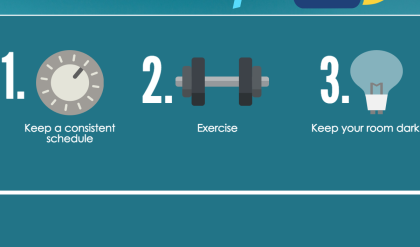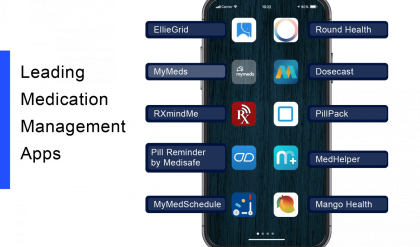
Navigating the Healthcare Maze: 5 Simple Steps to Choosing a Reliable Home Healthcare Provider
Finding the right home healthcare provider can feel like navigating a labyrinth. With so many options, ensuring you choose a reliable and trustworthy agency for your loved one (or yourself) requires careful consideration. This isn’t just about medical expertise; it’s about finding a compassionate, skilled team that fits your unique needs and expectations. Forget the overwhelming search; follow these five simple steps to confidently choose the perfect fit.
Step 1: Define Your Needs – A Personalized Healthcare Blueprint
Before you even begin browsing, take time to meticulously map out your specific requirements. This is your healthcare blueprint, and clarity here will save you time and potential heartache later. Consider these key aspects:
- Type of care: Are you looking for skilled nursing, home health aides, physical therapy, occupational therapy, speech therapy, or a combination? Be specific! “Assistance with daily living” is broad; “assistance with dressing, bathing, and medication reminders” is precise.
- Frequency and duration: Will care be needed daily, weekly, or just a few times a month? Is this a short-term need or long-term support?
- Specific medical conditions: List any relevant diagnoses, medications, and allergies. This information is crucial for matching you with the right caregiver.
- Personal preferences: Consider preferred languages, cultural sensitivities, and any personal preferences you or your loved one might have.
This detailed assessment acts as your guiding star in the selection process.
Step 2: The Detective Work: Vetting Potential Providers
Now, armed with your healthcare blueprint, it’s time for some detective work. Don’t rely solely on online advertising. Actively seek out potential providers using a multi-pronged approach:
- Referrals: Start with your doctor, hospital discharge planner, social worker, or even trusted friends and family. Word-of-mouth recommendations often provide the most honest insights.
- Online research: Check online reviews on platforms like Google, Yelp, and Healthgrades. Pay close attention to both positive and negative feedback, looking for patterns and recurring themes.
- State licensing boards: Verify the agency’s licensing and accreditation. Ensure they meet all state and federal regulations. This step safeguards your loved one’s safety and well-being.
- Professional organizations: Check if the agency is affiliated with reputable professional organizations. This often indicates a commitment to quality and ethical standards.
Step 3: The Interview Process – Beyond the Brochure
Don’t just look at brochures; engage in thorough interviews with multiple agencies. This is your chance to assess their suitability firsthand. Ask probing questions about:
- Caregiver qualifications: Inquire about their experience, certifications, background checks, and training. Don’t hesitate to request proof of qualifications.
- Caregiver-to-patient ratio: Understand the agency’s staffing model and how they ensure adequate care coverage.
- Emergency procedures: Inquire about their protocols for handling emergencies and unexpected situations.
- Communication channels: How will the agency keep you informed about your loved one’s progress and any changes in their condition?
Step 4: Transparency is Key – Understanding Costs and Contracts
Healthcare costs can be complex. Don’t be shy about asking detailed questions regarding:
| Aspect | Questions to Ask |
|---|---|
| Service Costs | What are the hourly/daily/weekly rates? Are there hidden fees? |
| Insurance Coverage | Do you accept my insurance? What is my out-of-pocket cost? |
| Contract Terms | What are the terms of the contract? Can it be terminated? |
| Payment Methods | What payment methods do you accept? |
Transparency is paramount. A reputable agency will readily answer your questions and provide clear, detailed information.
Step 5: The Gut Check – Trust Your Instincts
After thorough research and interviews, trust your gut feeling. Do you feel comfortable and confident with the agency and its staff? Do they seem genuinely caring and committed to providing high-quality care? A good connection is crucial for a positive healthcare experience. Choosing a provider is a significant decision; don’t hesitate to walk away if you have any doubts.
Choosing a reliable home healthcare provider doesn’t have to be daunting. By following these five steps, you can navigate the process confidently, ensuring your loved one receives the best possible care in the comfort of their home. Remember, thorough preparation and proactive questioning are your most valuable allies in this crucial decision.

Additional Information
Delving Deeper: 5 Simple Steps to Choosing a Reliable Home Healthcare Provider
The seemingly simple act of choosing a home healthcare provider requires careful consideration, as the well-being and safety of a loved one are at stake. While a five-step guide provides a foundational framework, a deeper analytical dive reveals the complexities and nuances involved in each step. Let’s examine these steps with enhanced detail and provide valuable insights:
Step 1: Define Your Needs and Assess the Patient’s Condition:
This step extends beyond a simple list of needs (e.g., medication management, wound care, physical therapy). A thorough assessment necessitates understanding the patient’s complete medical history, including comorbidities, cognitive abilities, and functional limitations. This informs the level of care required – skilled nursing, home health aides, or a combination.
- Analysis: Failing to accurately assess needs can lead to inadequate care, potentially resulting in hospital readmissions or adverse events. For instance, a patient with dementia requiring constant supervision needs a different level of care than someone recovering from a minor surgery.
- Example: A patient with congestive heart failure requires monitoring of vital signs, medication administration, and potentially oxygen therapy. This necessitates a skilled nursing component. Conversely, a patient post-stroke needing assistance with bathing and dressing may only require a home health aide.
Step 2: Check Licenses, Certifications, and Insurance Coverage:
This crucial step involves verifying the provider’s legal compliance and financial stability. Going beyond simple license verification requires scrutinizing the provider’s accreditation status (e.g., accreditation by The Joint Commission), which signals adherence to higher standards of quality and safety. Insurance coverage should be confirmed before services commence to avoid unexpected financial burdens.
- Analysis: Operating without proper licenses exposes patients to potential risks. Unaccredited providers may lack robust quality assurance mechanisms, jeopardizing patient safety. Lack of insurance coverage can lead to significant out-of-pocket expenses for families.
- Statistics: The Centers for Medicare & Medicaid Services (CMS) publishes data on home health agency performance, including infection rates and patient outcomes. Analyzing this data can provide valuable insight into a provider’s quality of care. (Note: Specific statistics require referencing current CMS data.)
Step 3: Interview Potential Providers and Carefully Review References:
This stage demands more than just a phone call. Arrange in-person meetings to assess the provider’s professionalism, communication skills, and responsiveness to questions. Thoroughly vet references, contacting previous clients to inquire about their experiences with the agency’s responsiveness, staff competency, and overall quality of care.
- Analysis: A provider’s communication style is crucial. Effective communication is vital for ensuring patient understanding and adherence to treatment plans, particularly for patients with cognitive impairments or communication challenges.
- Case Study: A poorly communicated medication schedule could lead to missed doses, impacting patient health. Similarly, a lack of responsiveness to concerns could delay necessary interventions, leading to complications.
Step 4: Assess the Agency’s Staff Training and Background Checks:
This step involves ensuring that the provider conducts thorough background checks on their employees and provides comprehensive training tailored to the specific needs of various patient populations. Inquire about staff-to-patient ratios and the agency’s policies on staff continuity.
- Analysis: Inadequate staff training can compromise patient safety. Background checks are critical for protecting vulnerable patients from potential abuse or neglect. Consistent staffing minimizes disruptions and facilitates the development of a strong therapeutic relationship between the patient and caregiver.
- Example: A provider’s commitment to ongoing training in infection control practices is crucial in preventing hospital-acquired infections, particularly for patients with compromised immune systems.
Step 5: Establish Clear Communication Channels and Regularly Evaluate the Care Provided:
Open communication is paramount. Establish a system for reporting concerns or changes in the patient’s condition. Regular evaluation of the provided care should involve both the patient (if capable) and family members, assessing effectiveness, satisfaction, and areas for improvement. Document all interactions and concerns.
- Analysis: Ignoring concerns can lead to escalating problems. Regular evaluations provide opportunities for course correction, ensuring the care plan remains aligned with the patient’s evolving needs.
- Example: Regular meetings with the care team, coupled with detailed documentation of care provided, facilitate proactive adjustments to the care plan and contribute to positive patient outcomes.
In conclusion, selecting a reliable home healthcare provider requires a systematic and analytical approach that extends beyond the five simple steps. Diligent investigation, thorough assessment, and continuous monitoring are vital for ensuring the provision of safe, effective, and patient-centered care. Using available resources like CMS data and actively engaging with providers and references enhances the decision-making process and safeguards the well-being of loved ones.






